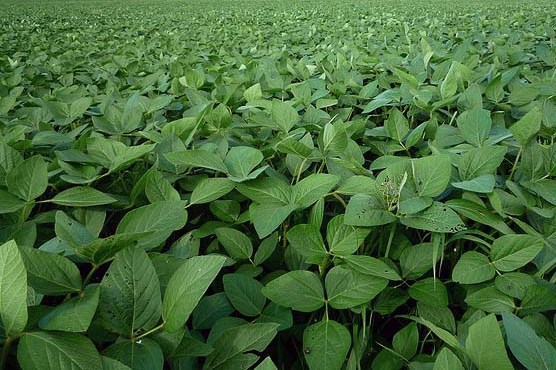Soybean is a Kharif crop that is sown in the first week of June. But before sowing this crop, farmers need to know about the right way of sowing, resulting in a good yield. Soybean is one of the profitable crops that helps to earn high profits. Its oil helps the growers to earn good money as it has good demand in the market. Apart from this, soybean is used to make soya bean, soya milk, soya paneer etc.
Did you know that soybean comes from oilseed crops cultivated in many countries and states. India produces 12 million tonnes of soybean. Major Indian soybean growers are Madhya Pradesh, Maharashtra and Bihar. Madhya Pradesh accounts for 45 per cent of soybean production, while Maharashtra accounts for 40 per cent.
Nutrients found in soybeans
Soybean contains protein, calcium, fiber, vitamin E, B complex, thiamine, riboflavin amino acid, saponin, sitosterol, phenolic acid, and many other beneficial nutrients. In addition, it contains iron which cures anaemia.
Climate and soil for soybean cultivation
A warm and moist climate is suitable for soybean cultivation. The proper temperature for its cultivation should be 26-32 degrees Celsius. The loamy land with good drainage is ideal for soybean cultivation. The pH value of the soil should be 6.0 to 7.5 Celsius. Along with this, use the Farmtrac 60 Powermaxx tractor model to maintain the soil quality which increases crop yield.
Cultivation Preparation
After harvesting the Rabi crop, deep ploughing of the field with reversible moldboard plough must be done every three years and prepare the area well every year. For deep tillage, use a rigid tine cultivator or moldboard plough. The levelling of the field must be done after every three years. Soybean crop should be sown after summer ploughing of the area. Remember that it should not be planted with the harvest sown in the first crop season when sowing soybean. One more thing, it is advisable to sow it only when there is 100 mm of rainfall. It should not be planted in less rain than this. For this process, you can use a Farmtrac 45 tractor as it enhances productivity by providing the best performance in the field.
Seeds Quantity
Always use the certified seed for sowing soybean. If the source saved last time is being used in its field, it should be treated first. To ensure that the seeds taken from the market are authentic, buy seeds from cooperative seed stores and take a firm receipt. Plant number should be kept at 4-4.5 lakh/ha. Whereas, for small grain varieties, use seed rate at 60-70 kg per hectare. For large grain varieties, the seed quantity is 80-90 kg per hectare.
Sowing Method
Farmers should sow soybeans in rows, making it easier to weed the crops. Farmers should do sowing by seed drill to sprinkle seeds, and fertilizers can be done simultaneously. Soybean should be sown by Farro Irrigated Raised Bed Method or Broad Bed Method (BBF). For sowing with this method, the profit can be increased by a little more cost than the traditional method. It has given good results in soybean crops even under adverse conditions like high or low rainfall. In this method, a deep and wide drain is made after every two rows so that in case of heavy rain, the rainwater quickly exits the field through these drains. The crop is saved due to being on a high bed, while due to excessive rainfall in the levelling method, the area gets filled with water, and the crop gets spoiled.
Similarly, in case of less rainfall, rainwater is stored in these deep drains, and the plant gets moisture, due to which there is no shortage of water in the plants. Moreover, each row receives adequate sunlight and air due to the wide conduit. As a result, plants get more space for spreading, which increases the branching of plants and produces more flowers and pods and consequently increases production.
Soybeans Irrigation
The soybean crop is a Kharif crop that requires less irrigation. But if there is a prolonged drought during pod filling, irrigation is needed. At the same time, it should be kept in mind that there should be no water logging in the field during the rainy season.
Harvesting of Soybean
Depending on the variety, it takes 50 to 145 days for the soybean crop to mature. When the soybean crop is mature, its leaves turn yellow, and the soybean pods dry quickly. At the time of harvesting, the moisture content in the seeds should be around 15 per cent.
Soybeans Yield
By using improved soybean varieties, farmers can get an average yield of up to 18-35 quintals. At the same time, MACS 1407, a new type of soybean developed by Indian scientists, can yield 39 quintals per hectare. However, only 19 per cent of the oil has been reported in it.
Stay tuned for more related blogs.

